Monday, June 21, 2021, was the day. Through BlueCity, the municipality of Rotterdam, in collaboration with DCMR Environmental Protection Agency Rijnmond, opened a Circular Counter where businesses can go with all their questions about using waste as a raw material. That same day, rotterzwam received a legal ruling on the use of coffee grounds.
Waste regulations are quite complex. We already knew this when we started with rotterzwam, but it only became clearer during the " Back to the Soil " project. At the start of that project, the competent authorities didn't know who was authorized to grant an exemption for our experiments.
In our day-to-day operations we face two challenges because we work with waste.
The first challenge concerns transport. Companies in the Netherlands engaged in the transport, collection, trading, and/or brokerage of commercial waste are required to be listed on the national VIHB list. The NIWO issues the so-called VIHB registration.

When Rotterzwam began in 2013, we duly applied for and received this registration. This made us the country's smallest commercial waste transporter, with a fleet of just one cargo bike.
It always felt a bit strange to have to carry that VIHB registration on the cargo bike, because we cycled through the city with a few buckets of coffee grounds.
The second challenge concerns working with waste . However, it's not permitted to use waste to grow food. From a purely lexical perspective, it doesn't seem appealing either. Growing food on waste. But traditionally, oyster mushrooms are grown on straw [waste stream] and mushrooms on straw and horse manure [waste stream]. So, the coffee grounds are actually not that bad after all. ;-)
Fortunately, we didn't wait for that and simply got started. But strictly speaking, there was no legal basis for our business activities over the past eight years.
On September 22, 2020, we submitted a request to the DCMR to consider coffee grounds as continued use in the application as a substrate for oyster mushroom cultivation by Rotterzwam.
Currently, coffee grounds are considered waste. However, we believe that the use of coffee grounds in this specific case can be considered continued use, and we asked the DCMR to issue a ruling on this matter.
In support of the request, we have submitted various documents, including a substantiated request for a legal judgment.
On Monday, June 21, 2021, at 12:03 PM, we received the DCMR's ruling. The DCMR believes that, based on the information provided by rotterzwam, it can be concluded that the use of coffee grounds from various holders can be considered continued use, and that this does not constitute disposal within the meaning of Article 1.1, paragraph 1, of the Environmental Management Act, but rather continued use.

With this so-called " Administrative Judgment on the Continued Use of Coffee Grounds, " we are achieving an important step in real system change. A step towards the circular economy. A step towards a society that closes loops and maximizes the use of raw materials.
The next goal is to get coffee grounds, spent coffee grounds substrate, and spent substrate from regular oyster mushroom cultivation added to the list of permitted fertilizers. Hopefully, more on that soon.

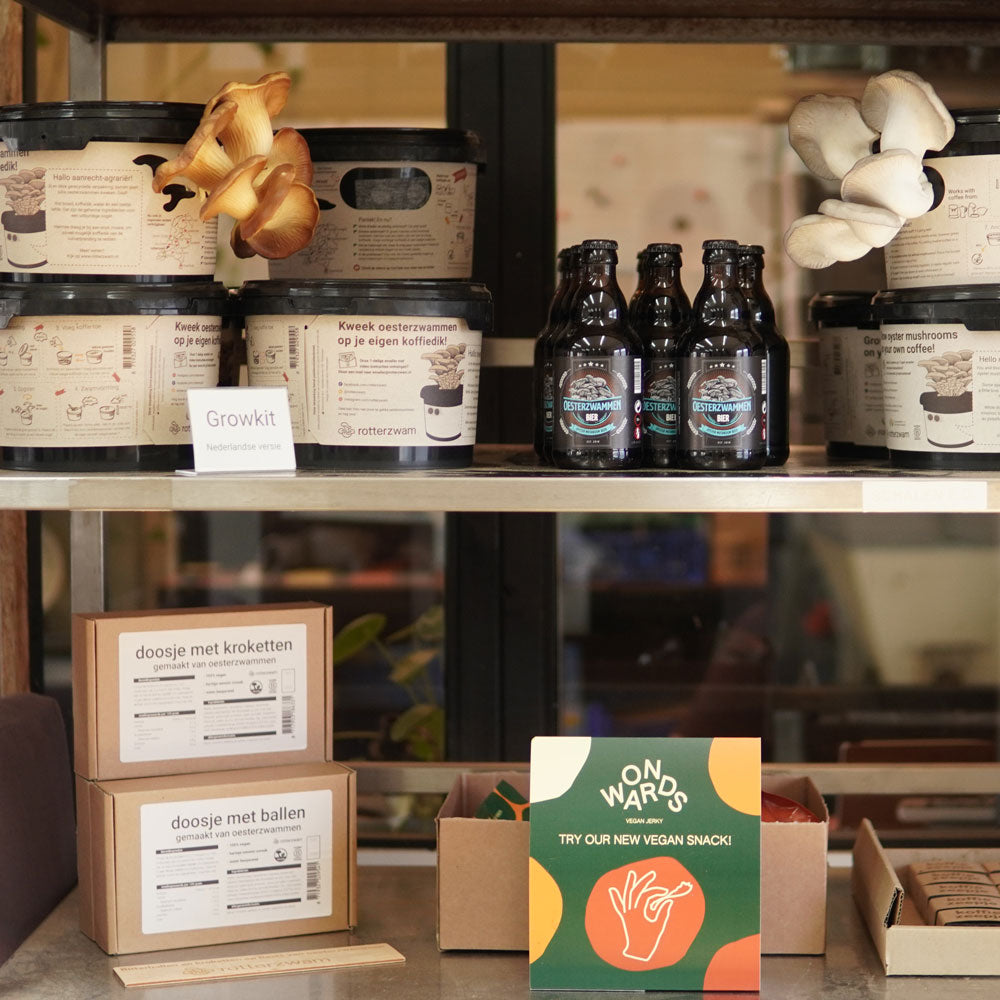
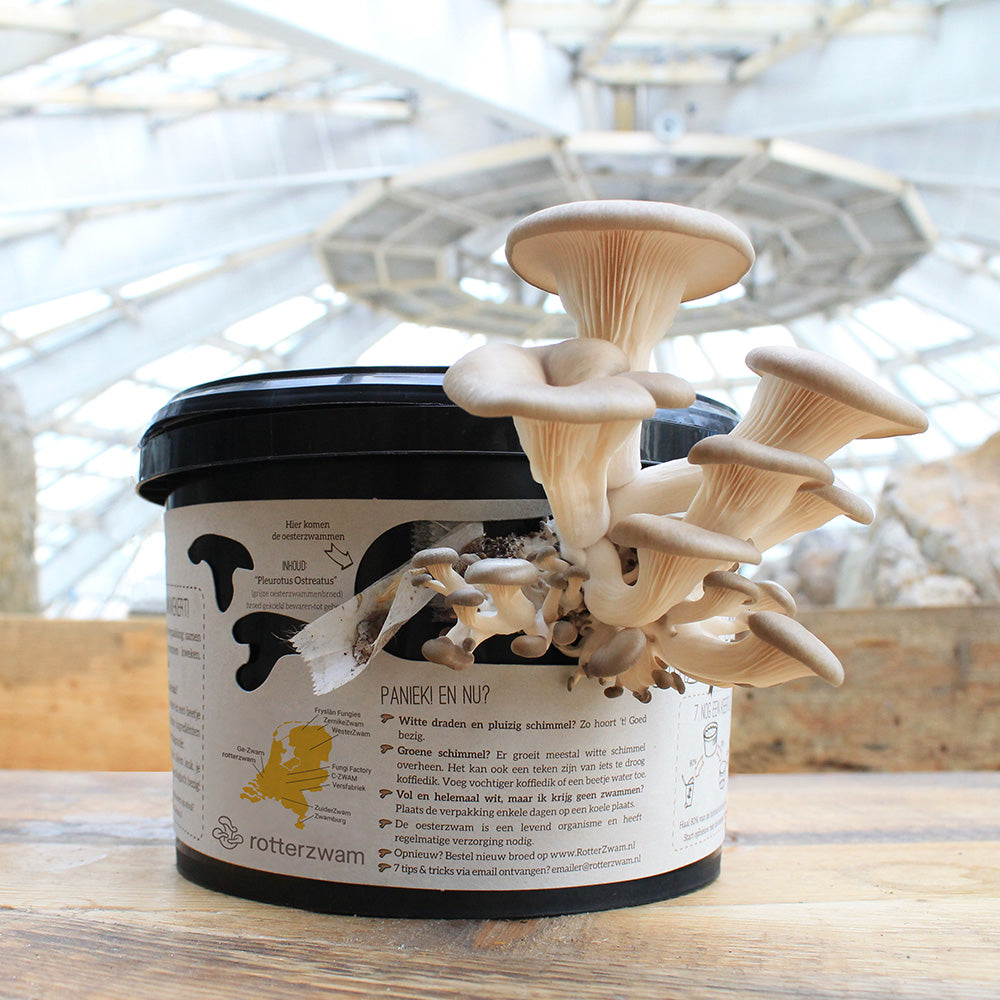
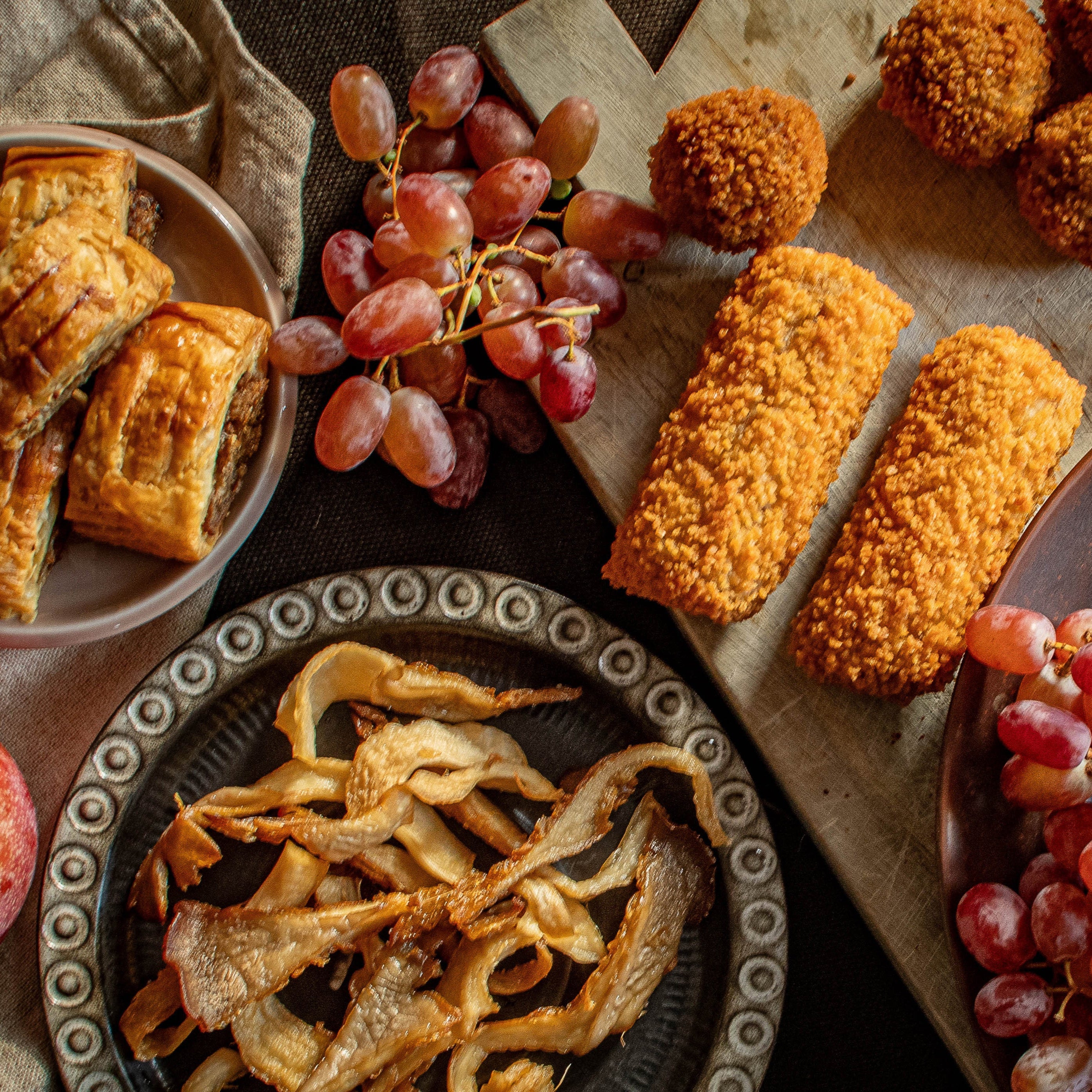
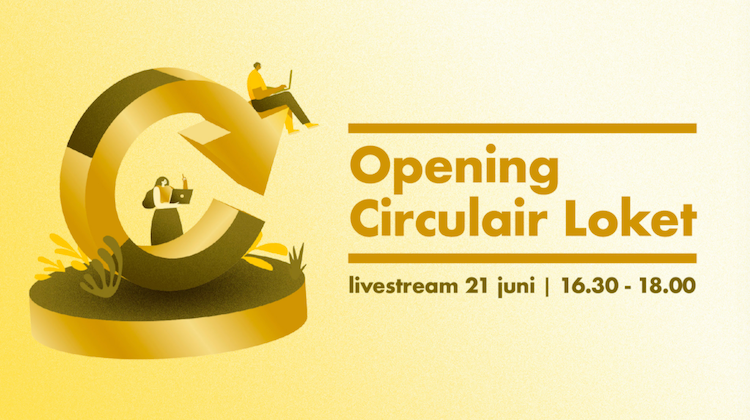
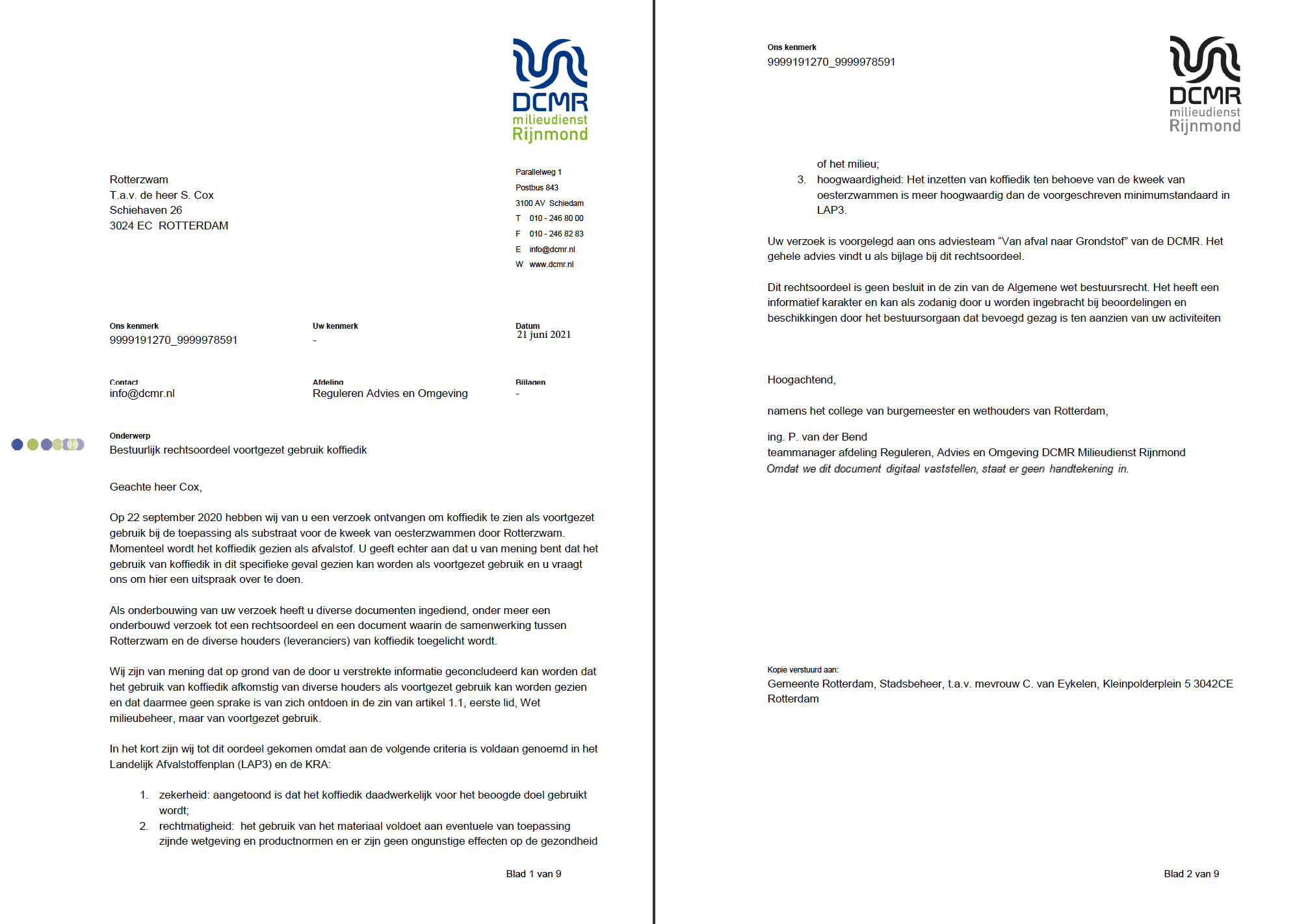
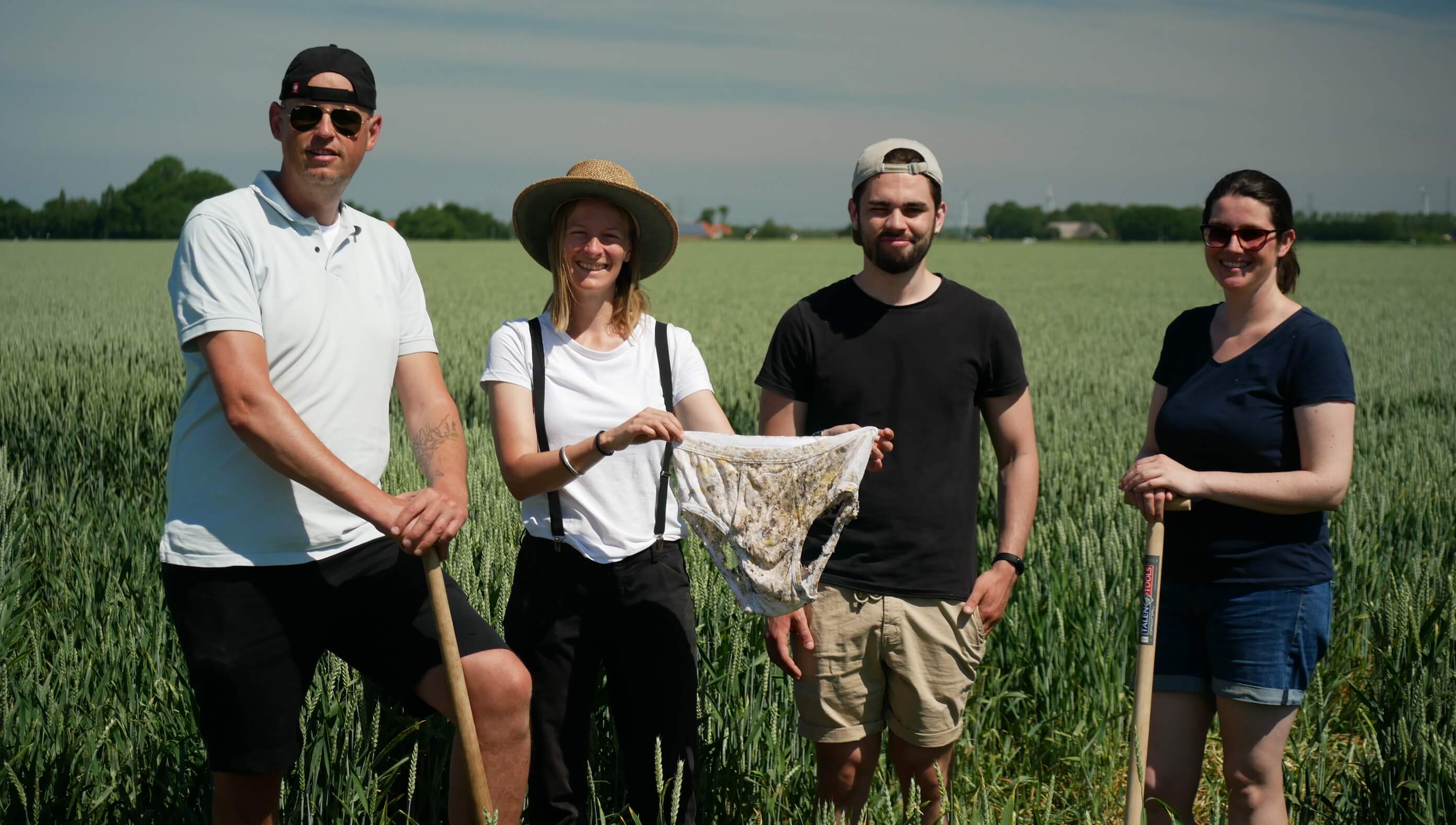
5 comments
Ad van Tetering
Van harte gefeliciteerd met het behaalde succes dat koffiedik niet meer wordt aangemerkt als afvalstof maar dat koffiedik wordt gezien als voortgezet gebruik. Dit is een doorbraak om te gaan werken aan circulaire toepassingen van meerdere vrijkomende reststromen. Dank daarvoor.
Ad van Tetering
Van harte gefeliciteerd met het behaalde succes dat koffiedik niet meer wordt aangemerkt als afvalstof maar dat koffiedik wordt gezien als voortgezet gebruik. Dit is een doorbraak om te gaan werken aan circulaire toepassingen van meerdere vrijkomende reststromen. Dank daarvoor.
Lane
Congratulations. How strange that all these bureaucracies are needed to make a decision that seems entirely self explanatory – well done on getting through this – and on the years of action beforehand.
Lane
Not surprised it got through. Coffee grounds are very clean-feeling and can be used for cleaning uses and for what’s that thing called when you use granules to clean your skin? Something-ation? Oh yeah, Exfoliation. I do wonder if the mushrooms have any measurable level of caffeine content, but it wouldn’t put me off.
Annelies Goedbloed - HaagseZwam
Labonderzoek van mycostraat levert al een stap om in te zetten op het land. Er zitten geen enkele giftige stoffen in, geen vetten, zouten, pH waarden tussen 6 en 7. Wat de beste manier is om they verder te ‘verwerken’ , dat kan je lezen in het verslag van onze afstudeerder. Die plaatsen wij binnenkort op de site van HaagseZwam.
Leave a comment
All comments are moderated before being published.
This site is protected by hCaptcha and the hCaptcha Privacy Policy and Terms of Service apply.